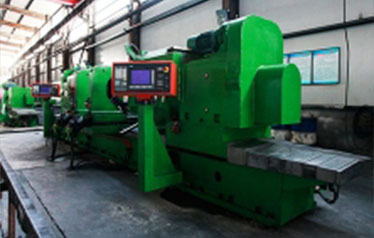Premier Li Keqiang presided over an executive meeting of the State Council on April 25, decided to introduce seven more tax reduction measures to support entrepreneurship innovation the development of small micro enterprises; to deploy supervision assessment of inclusive banking services for banks to ensure a reduction in financing costs for the real economy this year.

In order to reduce the cost of entrepreneurship innovation, enhance the development momentum of small micro enterprises, promote employment expansion, the meeting decided to increase tax reductions in accordance with the requirements of the Central Economic Work Conference the "Government Work Report". First, they will enjoy a one-off pre-tax deduction for the year. The upper limit of unit value of newly purchased R&D instruments equipment purchased by enterprises in China has been increased 1 million yuan to 5 million yuan. The second is to increase the annual taxable income limit of small micro enterprises that enjoy the preferential policy of halving corporate income tax 500,000 yuan to 1 million yuan. The implementation period of the above two measures is January 1, 2018 to December 31, 2020. The third is to cancel the deduction limit for overseas R&D expenses entrusted by enterprises. The fourth is to extend the loss carry-over period for high-tech enterprises small medium-sized technological enterprises 5 years to 10 years. The fifth is to unify the pre-tax deduction limit for employee education expenses of general enterprises with the limit for high-tech enterprises, 2.5% to 8%. The aforementioned three measures will be implemented January 1 this year. Sixth, May 1st, the stamp duty levied on the capital account book set up by taxpayers based on the total amount of paid-in capital capital reserve will be halved, stamp duty will be exempted on other account books collected by piece. Seventh is to extend the preferential policy of 70% of the investment amount to deduct taxable income the venture capital enterprises angel investment individuals currently in the 8 comprehensive innovation reform pilot areas the Suzhou Industrial Park pilot to invest in the seed stage start-up stage technology enterprises Nationwide. The relevant preferential policies for corporate income tax personal income tax will be implemented January 1st July 1st respectively. The adoption of the above seven measures is expected to reduce the tax burden of enterprises by more than 60 billion yuan throughout the year.
The curtain on tax cuts this year has begun. The executive meeting of the State Council held long ago determined measures to deepen the reform of value-added tax further reduce the tax burden of market players. The tax burden of market players will be reduced by more than 400 billion yuan throughout the year, domestic foreign companies will benefit equally. Jiang Zhen, an associate researcher at the China Academy of Financial Economic Strategy of the Chinese Academy of Social Sciences, told reporters that this tax cut is also a link in my country’s tax cut reform package this year. It constitutes a tax cut "combined punch" with the new value-added tax deployed by the State Council executive meeting. It can play a role in stimulating activating market vitality, it is expected that there will be other tax reduction measures in the future.
The meeting also deployed the supervision assessment of inclusive banking services for banks. In this regard, Zhang Jun, chief economist at Morgan Stanley Huaxin Securities, told reporters that since last year, financial deleveraging has promoted the return of credit off-balance sheet to on-balance sheet, which has effectively reduced systemic financial risks, but at the same time it has also brought rising financing costs. The problem of financing, especially the "three rural" small medium-sized enterprises' financing is difficult expensive. In view of the difficulty of traditional monetary policy tools to solve such structural problems, advancing the implementation implementation of inclusive financial policies will help prevent "agriculture, rural areas farmers" small medium-sized enterprises being "injured" in the process of continuous deleveraging in the financial industry.